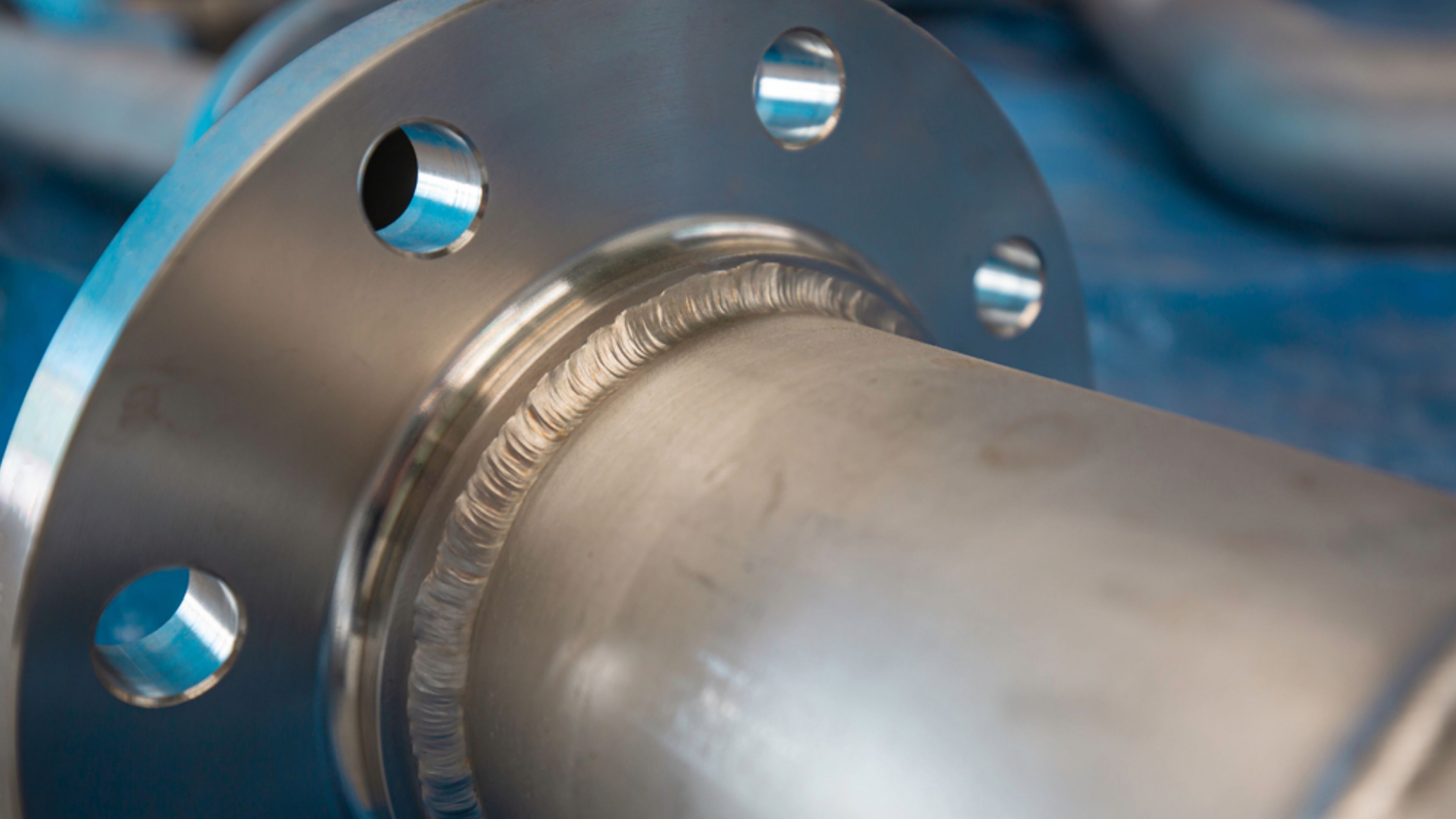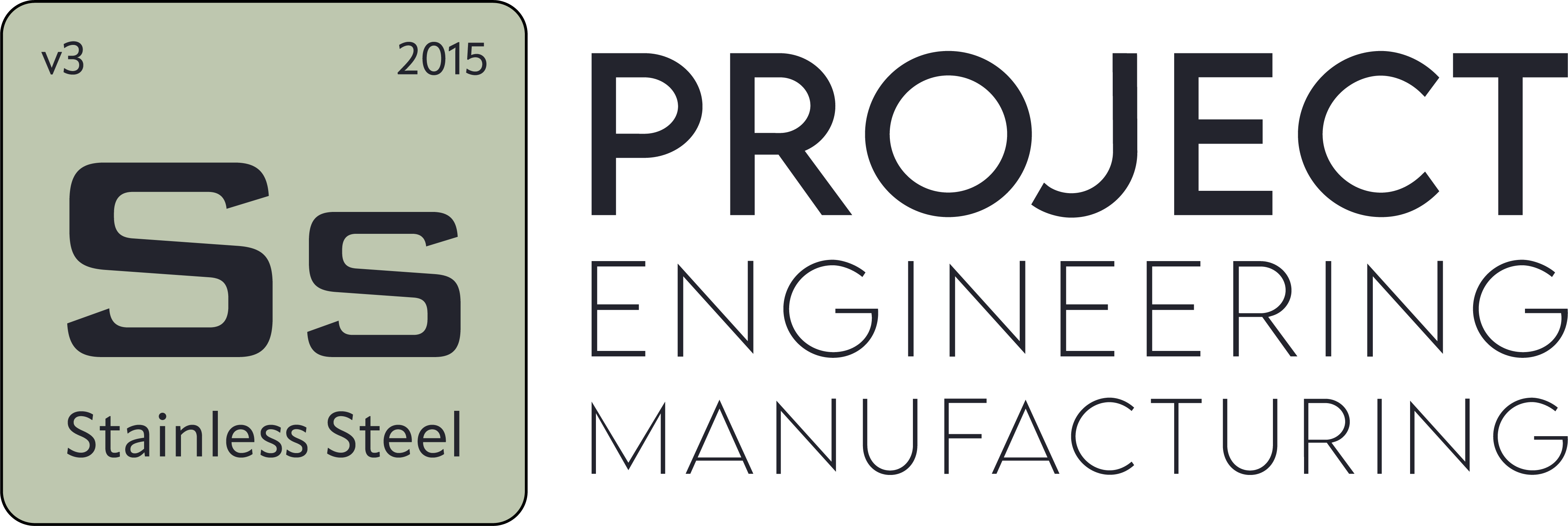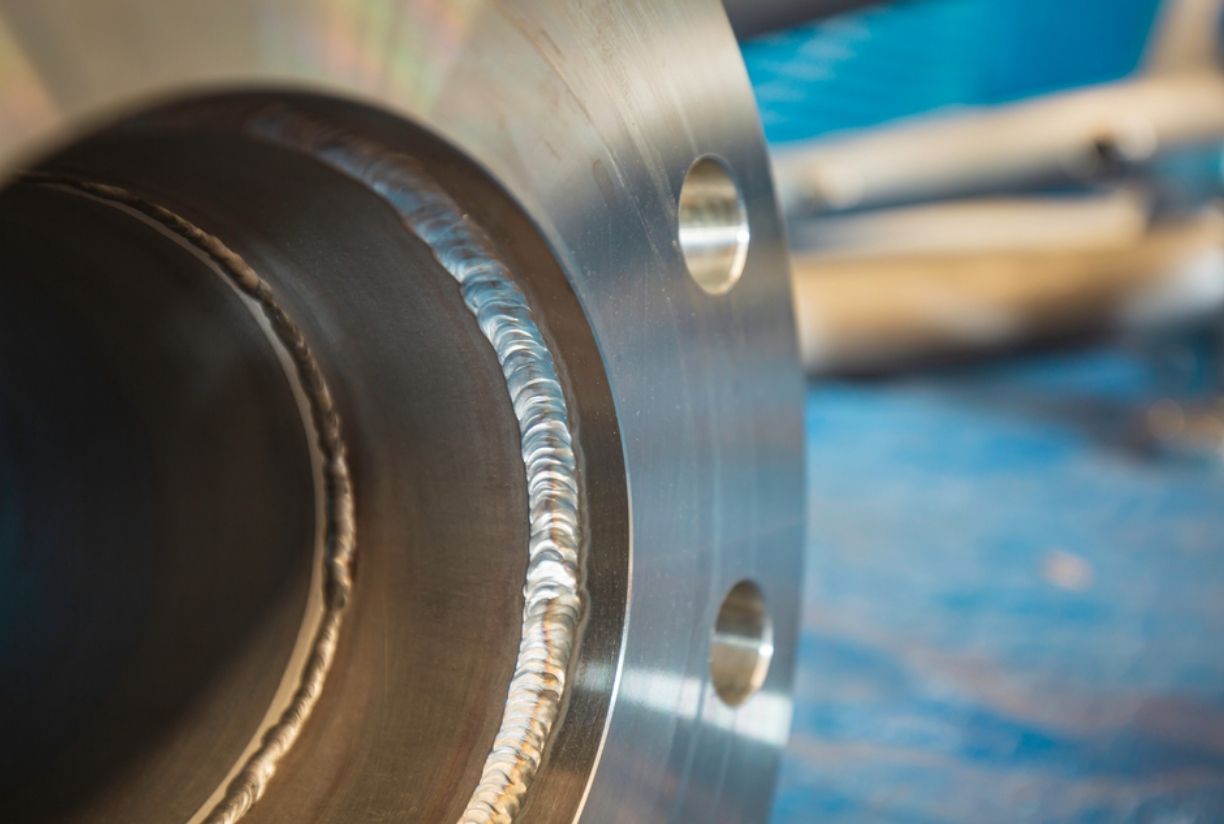What is Passivation? The Importance of Passivation in the Pharmaceutical and Food Industries
- Blog
- What is Passivation? The Importance of Passivation in the Pharmaceutical and Food Industries
What is Passivation? The Importance of Passivation in the Pharmaceutical and Food Industries
Table of Contents
- What is Passivation and Why is it So Important in the Pharmaceutical and Food Industries?
- Does the Absence of Passivation Endanger Pharmaceutical and Food Safety?
- How Does the Passivation Process Ensure Hygiene in Food Production?
- What is the Role of Passivation in Quality Control in the Pharmaceutical Industry?
- What is the Connection Between Passivation and Corrosion Prevention?
- How is the Passivation Process Standardized for Food Safety?
What is Passivation and Why is it So Important in the Pharmaceutical and Food Industries?
One of the fundamental concepts affecting the lifespan of process equipment and product safety is passivation, which refers to the controlled strengthening of the protective oxide film on metal surfaces. Iron contamination on the surface, post-weld effects, and aggressive cleaning agents can weaken this film; if the film is not rebuilt, ion release increases, taste and odor profiles deviate, and batch consistency decreases. Field observations by SS-Proje frequently show that applications carried out within the correct chemical window significantly reduce downtime in filling lines, directly benefiting operations.
The critical point is to correctly adjust the reactants, temperature, and contact time according to the material and environmental conditions. On surfaces in contact with food and pharmaceuticals, the most common base, stainless steel, can develop micropits with incorrect cleaning protocols, accelerating the adherence of dirt and microorganisms. In this environment, the initiation of biofilm becomes easier, and recontamination after cleaning can become chronic. Electrochemically, the lower the surface reactivity, the more limited the ion transfer; this preserves the sensitivity of product formulations.
For both the pharmaceutical industry and the food industry, traceability, cleanability, and repeatability converge in the same equation. Localized wear types such as corrosion and especially pitting indicate practical points where the passive film weakens; these pits can cause particle detachment, increasing the risk of physical transfer into the product. SS-Proje maps surface conditions before line commissioning and measures film continuity on critical equipment; point conductivity and ion release data from probes are linked to process specifications.
On the application side, citric acid-based treatments, post-weld pre-treatments, and, if necessary, electropolishing are combined to optimize the Cr/Fe ratio. In processes with high chloride loads, an AISI 316L base provides advantages for film stability; proper pH and duration combined with controlled roughness (Ra) values enhance cleanability. The SS-Proje team prioritizes achieving target Ra ranges without disrupting the balance between cleaning chemistry and passive film during line trials, simplifying operator instructions and closing sources of variation on-site quickly.
On the compliance side, GMP requirements are interpreted through traceable numbering of product-contact surfaces and cleaning validation packages. In integrated CIP/SIP flows, oxidant limits, temperature, and contact time determine the lifespan of the passive film; SS-Proje establishes facility-specific chemical concentration windows for these parameters and links periodic film verification to XPS/EDS, ferrous tests, and rapid staining methods. For audit-ready “demonstrable” data, validation traces are standardized; pre- and post-batch comparative ion release tables are archived regularly as operational decision support.
Operational benefits of passive film management include extended equipment maintenance intervals, balanced cleaning chemical consumption, and reduced unplanned downtime. From a brand perspective, SS-Proje develops phased application plans during commissioning with field teams, prioritizes risky points on pilot lines, and implements the deployment plan without disrupting production schedules; this increases film continuity on filling needles, heat exchanger plates, and tank nozzles, significantly reducing random contamination events.
Does the Absence of Passivation Endanger Pharmaceutical and Food Safety?
The foundation of safe production relies on product-contact surfaces remaining chemically balanced and inert; this is where passivation comes into play. On equipment with weak film integrity, metal ion transfer increases, taste and odor profiles deviate, and formulations may lose stability under oxidative stress. This effect can extend to clinical and sensory outcomes, especially for batches where micro-dosing is critical; a “we can manage without it” approach is an expensive mistake. SS-Proje’s field performance shows that when chemical and timing parameters within the process window are established, downtime is significantly reduced; moreover, this improvement becomes even more permanent when operator instructions are simplified.
Microstructural defects and contamination in production environments first disrupt surface hydrophobicity, then facilitate microorganism adherence; in short, a suitable ground for biofilm formation is created. On non-passivated equipment surfaces, corrosion and localized pits (pitting) accelerate; particles detached from these pits can directly transfer into the product. In food matrices, this results in color and turbidity anomalies, increased soluble metal ions, and “metallic” notes in sensory tests. SS-Proje’s risk matrix prioritizes these defects on the weakest links of production lines (filling needles, heat exchanger plates, tank nozzles) and connects them to a targeted improvement plan.
If the stainless steel material is not processed correctly, post-weld free iron or surface oxides disrupt film continuity. Post-weld pre-treatments, citric-based treatments, and if necessary electropolishing rebalance the film; high chloride loads are compensated by an AISI 316L base. SS-Proje treats this set not as a one-time “cleaning” but as a monitoring and feedback process; XPS/EDS, ferrous tests, and conductivity readings are recorded to guide field decisions.
On the compliance front, three pillars exist: traceability, repeatability, and auditability. In GMP expectations reflecting hygienic design, the condition of equipment surfaces after cleaning is assessed; in this cause-effect chain, CIP/SIP parameters (pH, temperature, contact time) either protect or degrade the passive film. If parameters shift and the film weakens, cross-contamination risks increase, and variability grows between batches; this is where SS-Proje’s field validation protocols make a difference.
The short answer to “what happens without passivation?” is: the quality cost becomes visible, first in scrap and rework rates, then in customer complaints. In the pharmaceutical industry, this means deviations in stability studies and increased workload in risk assessments; in the food industry, it manifests as shortened shelf life and sensory inconsistencies. During audits, “proof” comes from validation files; SS-Proje predefines the parameter window, sample frequency, and acceptance criteria, providing audit-ready datasets and a sustainable control regime without overworking the team.
Final note: a passive film is not eternal; improper detergents, aggressive oxidizers, or unbalanced temperature profiles can weaken it within days. Therefore, SS-Proje defines a process-specific “protect-rebuild-verify” cycle; trend-based alert thresholds, periodic test windows, and simplified operator steps keep production lines live, because a non-passive surface is a hidden defect waiting for the next batch.
How Does the Passivation Process Ensure Hygiene in Food Production?
In food production facilities, chemical inertness and repeated cleanability of surfaces are directly related to passivation quality. The passive film limits interaction between the metal surface and the production environment; it reduces ion release, micro- and macro-particle detachment, and microorganism adhesion. This simple mechanism ensures hygiene continuity on the production line, as cleaning steps yield more predictable results as long as the film remains intact.
When the passive layer weakens, surface roughness and localized reactive areas emerge, creating ideal microhabitats for biofilm formation. Once biofilm settles, even standard CIP cycles may be insufficient, leading to cost increases, batch inconsistencies, and customer complaints. The fastest way to mitigate this risk is to integrate surface science into the process; SS-Proje measures passive film continuity in field applications and applies targeted repair/renewal as needed.
Material selection and post-processing also play a critical role in hygiene assurance; the correct stainless steel grade, post-weld treatment, and proper accelerated passivation recipe determine long-term surface behavior. Otherwise, weld defects and free iron points can become recurring corrosion sources. Passivation validation should be supported with XPS, ferrous tests, or surface conductivity measurements to demonstrate true safety beyond “apparently clean.”
CIP/SIP parameters must be limited to protect the passive film; combinations of alkaline and aggressive oxidizers can negatively affect the film. Therefore, process chemicals, temperature, and contact times must be determined with experienced teams like SS-Proje, considering the facility’s chemistry. This guarantees cleaning efficiency while preventing unnecessary film degradation.
Without traceability and documentation, hygiene assurance is uncertain. Periodic film verifications, sampling protocols, and trend analysis provide traceability; without audit-ready data, claiming “clean” is unproven. SS-Proje establishes this data infrastructure and streamlines field operations, protecting both production efficiency and consumer confidence.

What is the Role of Passivation in Quality Control in the Pharmaceutical Industry?
In pharmaceutical manufacturing, chemical stability of surfaces is a key determinant of final product quality; passivation plays a critical role in ensuring this stability. The passive layer limits interaction between metals and product matrices, minimizing metal ion release, micro-particle detachment, and reactive surface zones. For quality control labs, this ensures reproducibility of analytical results and reduces deviations in stability tests; results resembling a “random experiment” often occur on non-passivated surfaces.
Micro-pits caused by material and process incompatibility can create grounds for biofilm formation; once biofilm develops, standard cleaning cycles and validation protocols fail to achieve expected performance. At this point, quality control must not only analyze samples but also interpret surface science data. SS-Proje correlates field measurements with production data to enable rapid intervention at problem points, addressing issues before they affect the line.
Local corrosion zones during the process can cause analytical deviations due to both particle loss and ion release. Passivation effectiveness is directly related to surface composition and microstructural integrity; proper recipe, temperature, and contact time ensure results within control limits. Quality control evaluates XPS/EDS, ferrous, and conductivity readings to determine where additional measures are needed.
Compliance-wise, GMP requires surfaces to be demonstrably inert, not just apparently clean. Hence, validation procedures include post-passivation samples and protocol-based testing; quality control tracks metrics demonstrating passive film continuity (ion release, surface roughness, microbial counts). SS-Proje prepares facility-specific validation packages, providing audit-ready datasets.
CIP/SIP cycles and chemicals must not compromise the passive film; proper CIP/SIP parameters maintain cleaning efficiency without degrading the film. Material selection is another key factor; welded surfaces and poor workmanship may create free iron points, so suitable surface materials like AISI 316L and correct post-weld treatments are demanded by quality control stakeholders. Traceability throughout the process ensures deviations are quickly isolated and corrected; SS-Proje offers practical solutions for establishing this data infrastructure and training field teams.
What is the Connection Between Passivation and Corrosion Prevention?
Understanding how metallic surfaces behave under environmental effects starts with monitoring the passive layer dynamics; this is what we call passivation. Passivation forms a thin but effective oxide/film layer on the surface, preventing the metal from becoming active; the more continuous and homogeneous the film, the less reactive the surface. In industrial conditions, the goal is to maintain and rebuild this protective film as needed; if the film is absent or uneven, chemical interactions accelerate, leading to structural deterioration.
Corrosion is the practical outcome of electrochemical reactions between metal and its environment; this process causes both performance loss and contamination risk in production equipment. The direct way to prevent corrosion is to maintain film integrity — passivation is the defense line here. In areas where the film is weak, local current densities increase, ion transfer becomes easier, and pits, layer peeling, or general wear are observed.
Material selection, including stainless steel choices and suitable alloy grades, is crucial; the metal’s chemical composition determines passive film formation tendencies. Passivation applied without proper material and workmanship has a short lifespan. SS-Proje optimizes material-process matching using field data to ensure both initial quality and long-term durability.
Some surface defects facilitate biofilm and particle deposition; these microhabitats further weaken the passive layer and reduce cleaning cycle efficiency. Small pits on the surface can initiate pitting; as pitting progresses, local integrity of the protective film is compromised, and corrosion becomes more aggressive.
Industrial solutions are not a one-time treatment but a periodic verification and control cycle. Suitable alloys like AISI 316L, passivation according to correct recipes, and field validation improve durability. CIP/SIP program chemical and temperature parameters must be adjusted to protect the passive film; otherwise, cleaning itself undermines protection.
In industrial applications, sustainable protection cannot be maintained without validation and regular monitoring of process data. Monitoring methods (surface composition, conductivity, ferrous tests) detect corrosion tendencies early and allow intervention. Traceability supports audits and quality processes; SS-Proje integrates these data into operational decisions, reducing maintenance costs and extending equipment life.
How to Standardize the Passivation Process for Food Safety?
Standardizing the passivation process in food facilities is central to ensuring that surfaces remain inert and cleanable in a reproducible way. The first step is defining the process. For each facility, it should be clearly defined which methods will be used, which material classes will be preferred, and which tests will serve as acceptance criteria. Within this process, passivation application parameters (chemical formulation, temperature, contact time) should be included as mandatory procedures.
Material selection and workmanship quality are key determinants of the process; if an appropriate alloy is not chosen, welding areas and surface defects will disrupt the continuity of the passive layer. Therefore, standardized specifications must clearly indicate stainless steel grades, welding methods, and post-weld treatments. With suitable material and workmanship, the passive film becomes more durable, improving cleanability.
Another pillar of standardization is cleaning and verification protocols. Parameters of CIP/SIP cycles, detergents used, and oxidizer limits should be defined within the process; CIP/SIP parameters must be restricted so that they do not damage the passive film. Once these parameters are fixed, compliance is checked through periodic verification tests.
The verification program should be supported by biological and chemical indicators; measurements such as surface analyses, conductivity readings, and ferrous tests should be tied to a standardized testing schedule. In this way, critical parameters like biofilm risk, particle detachment, and ion release are regularly monitored. SS-Proje applies these verification packages in field practices according to the facility’s operational schedule, reporting monitoring data and generating audit-ready results.
Documentation in line with regulations is essential for compliance and quality requirements; process changes, formulation revisions, and test results should be archived according to GMP expectations. A data-driven approach ensures traceability; pre- and post-batch comparisons, trend analyses, and alert thresholds are integrated into standard operator instructions.
Critical control points should be identified for risk management: periodic surface checks must be mandatory in high-risk areas such as filling equipment, heat exchangers, and welded sections. Detecting local pits and pitting signs early prevents costly downtimes and recalls. SS-Proje provides facility-specific standard packages using these risk maps and leaves practical, measurable controls for operators during implementation.
No standard can be realistically maintained without standardized training and operator procedures; operators must understand the rationale behind passivation, prepare the correct mixtures, monitor timings, and maintain records. Additionally, standards integrated with the material supply chain and maintenance cycles (e.g., AISI 316L selections, post-weld passivation criteria) guarantee the long-term hygiene performance of the facility. When implemented with SS-Proje’s field support model, the lines achieve previously unseen stability.


